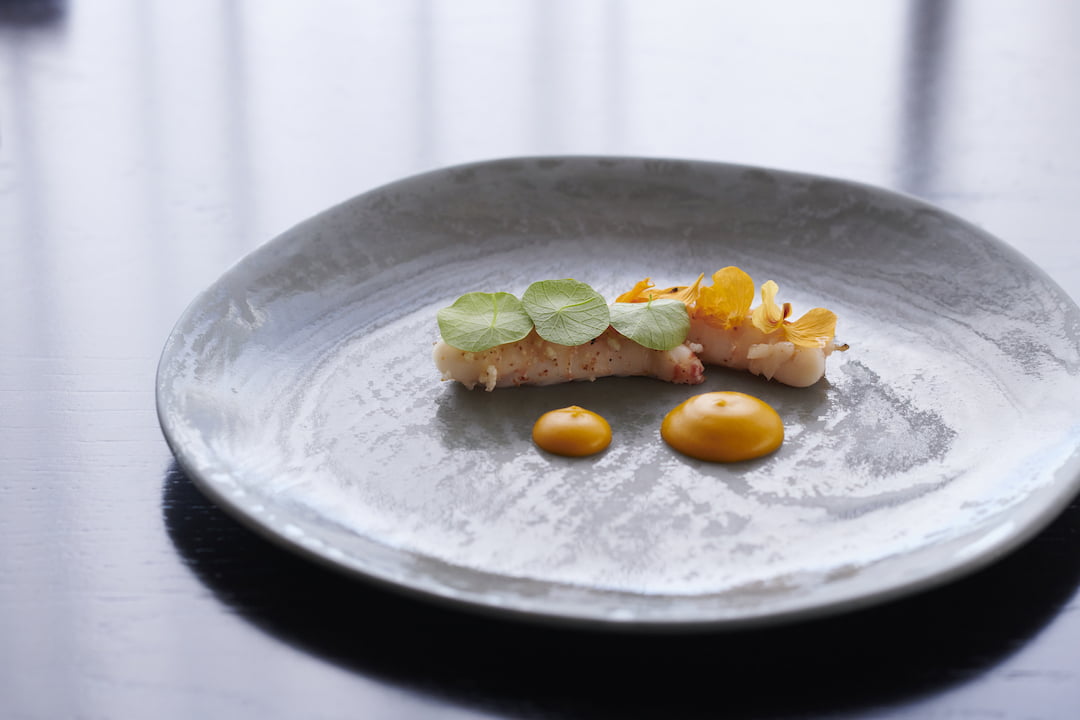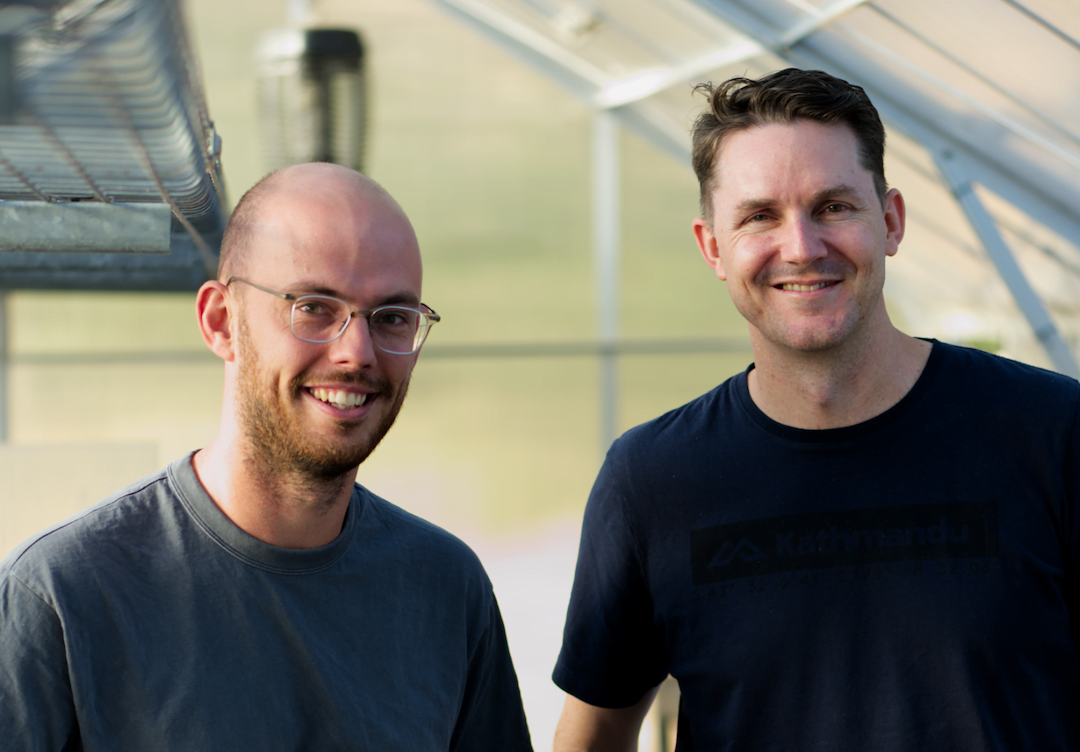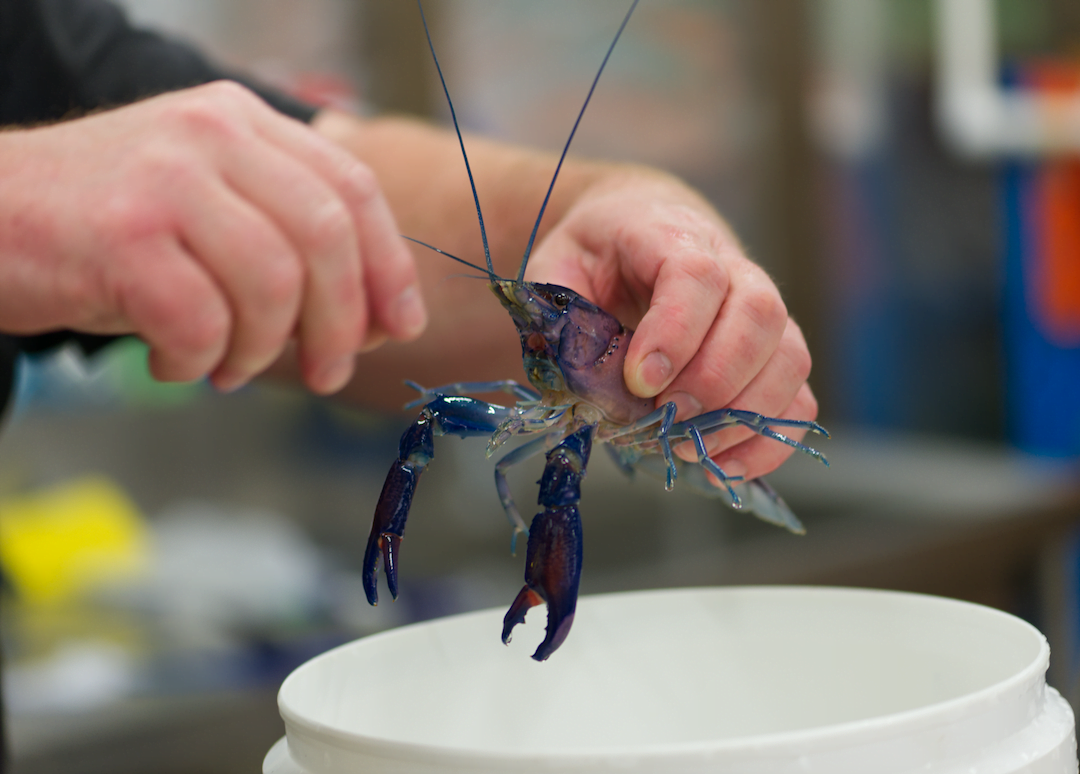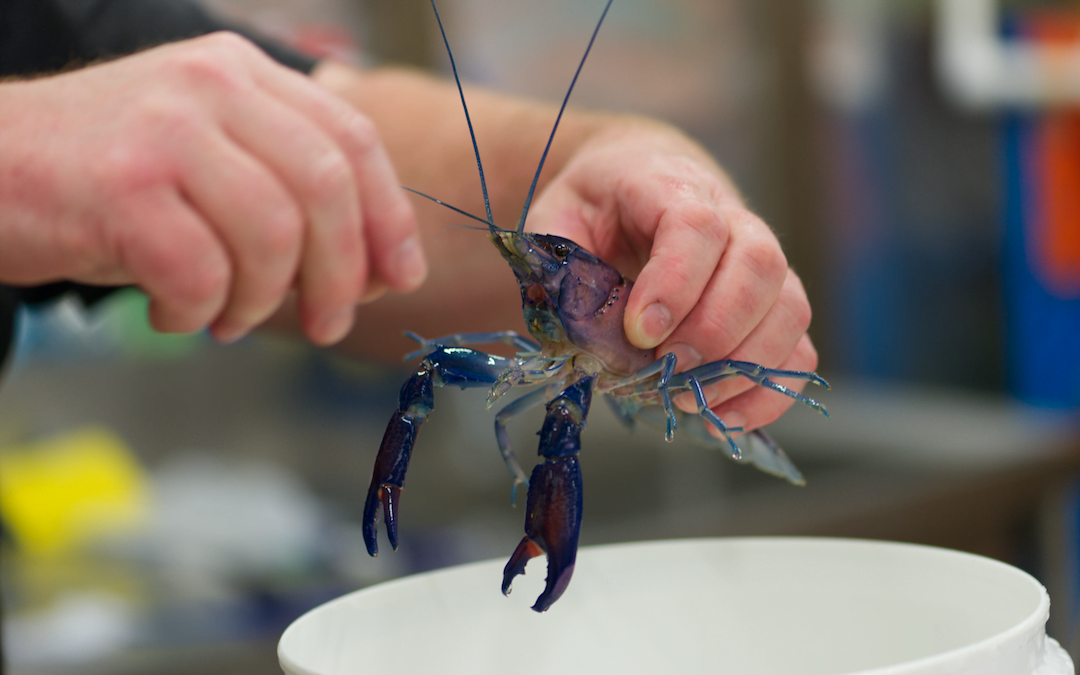It’s a Thursday evening in one of Perth’s most celebrated restaurants and the head chef is delicately placing the finishing touches on a quintessential Western Australian fine dining dish – marron.
Brushed with a bone marrow butter over a jarrah grill and served with a fresh pea puree and ajo blanco sauce, the Manjimup-sourced marron is the hero in Wildflower’s delectable four and six-course tasting menus.
The large freshwater crayfish, native to WA’s south-west river systems has become a highly-valued ingredient for culinary creatives like Wildflower Head Chef Michael D’Adamo.

Manijiump marron served at Wildflower
“The consistency is flawless and that’s something we really strive for at Wildflower,” Mr D’Adamo said.
The intricate menu is built around the six seasons of the Indigenous Noongar culture, with a focus on highlighting the best native ingredients the region has to offer.
Despite his Perth-based upbringing, Mr D’Adamo didn’t discover the culinary value of marron until well into his career while working in Melbourne at renowned restaurants such as Cumulus Inc. and with acclaimed chef Jacques Reymond.
“It is considered quite a luxury ingredient,” Mr D’Adamo said.

Michael D’Adamo
A marron-head souffle features alongside a native fish bouillabaisse at Ben Shewry’s award-winning Attica, regarded as one of the top 100 restaurants in the world.
Marron’s sweet, firm flesh carries flavour in a way that many other shellfish can’t, and it can be prepared using many different methods.
“Sometimes we blanch it and then glaze it back through the oven with butter and serve it with togarashi elements, barbecue it or serve it cold with a finger lime dressing – almost ceviche-style,” Mr D’Adamo said.
“We’ve always had glowing feedback about our marron dishes, no matter what season we are in.”
Marron has garnered a reputation as one of WA’s best kept secrets, but if the Perth-based agritech start-up Aquatic AI has anything to do with it, it won’t stay that way for much longer.
“When you talk about marron, a lot of Western Australians will get kind of starry eyed, there is a big folklore around them,” Aquatic AI co-founder Andrew Walker said.
Thanks to research investment from AgriFutures Australia, Andrew and his business partner Michael Storey are working with scientists at the University of Western Australia to develop a modern approach to marron farming to solve a problem that has hampered industry growth for years.

Aquatic AI co-founders Michael Storey and Andrew Walker
While marron can be wild-caught recreationally, it is grown in dams or ponds for the restaurant and gourmet commercial markets.
“One of the biggest challenges of growing marron at scale is that they are not the greatest neighbours to each other,” Mr Walker said.
Aquatic AI aims to develop a vertical farming system that will overcome that issue and reduce land, water and labour requirements at the same time.
Currently, Australia produces about 80 tonnes of farmed marron per year, with 60 tonnes of that produced in Western Australian farms.
The Aquatic AI team aren’t interested in gradual production gains – their dreams are much bigger.
“We see WA rock lobster as such an iconic industry and it’s worth half a billion dollars,” Mr Storey said.
“We don’t see any reason why marron can’t compete with it on a global stage.”

Marron being grown in the Aquatic AI lab
While traditional marron farming in outdoor ponds yields around three or four marron/square metre, Aquatic AI has already achieved yields of more than 100/square metre in its trial laboratory using a tank stacking system to optimise its physical footprint.
“By using robotics and data analysis, we see that growing to around 1,000/square metre,” Mr Walker said.
“We also expect improved growth rates, improved taste and good conditions for an animal to live in.”
Part of the on-going modelling for Aquatic AI’s farming system is also focused on optimising the nutrition and sale size of the marron to balance flavour, market demands and cost drivers.
“Marron is the largest commercially available freshwater crayfish, with demand outstripping supply, so we really want to play into those strengths,” Mr Storey said.
Restaurants like Wildflower literally can’t get enough of it.
“We source about 80 kilograms of marron a week and serve between 500-600 dinners,” Michael D’Adamo said.
“Whenever it is available, we always have marron on the Wildflower menu.”
To find out more about Aquatic AI’s project, visit www.agrifutures.com.au/news/aquatic-ai-seeks-investors-to-scale-high-tech-marron-system/
To discover other ways Australians are changing the agricultural landscape, click here.

